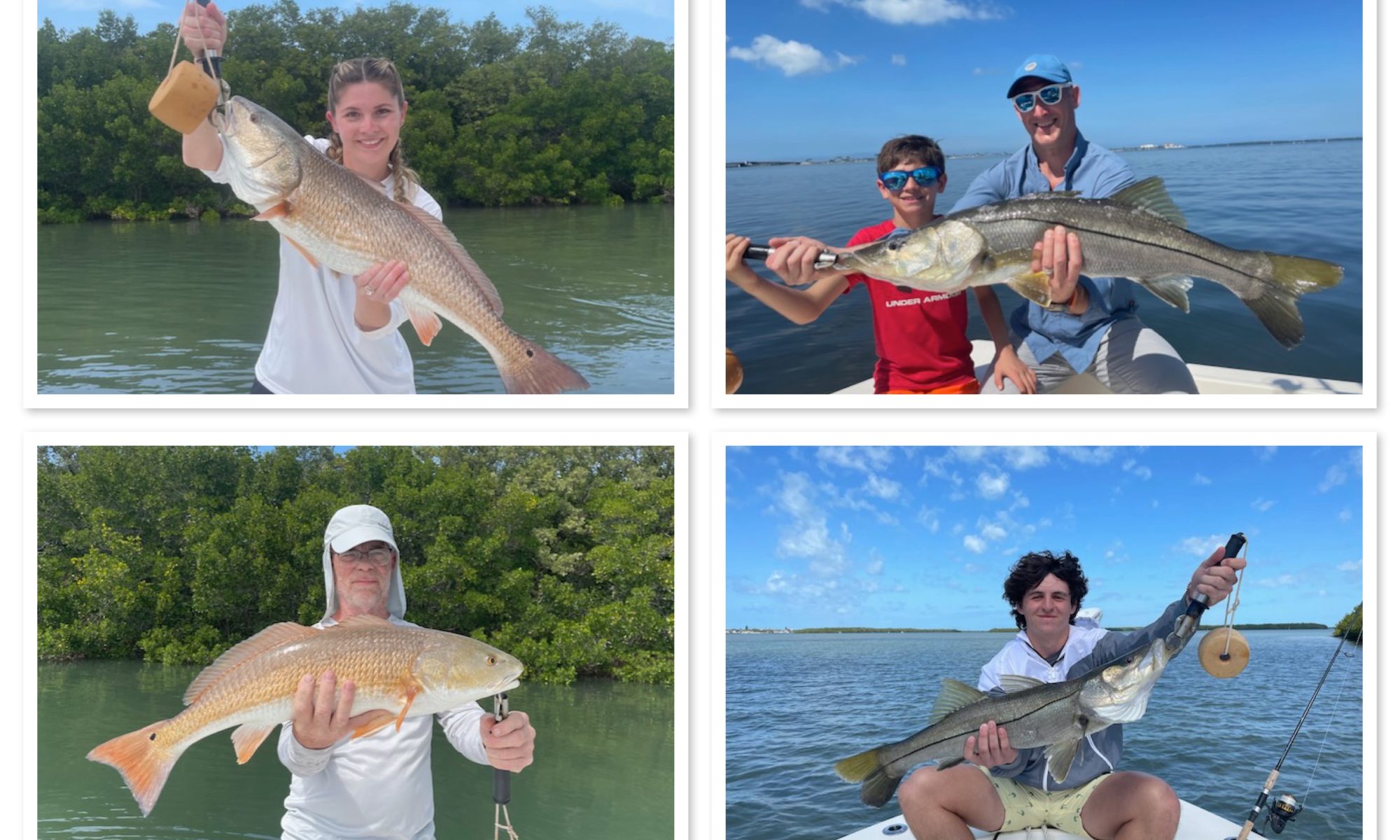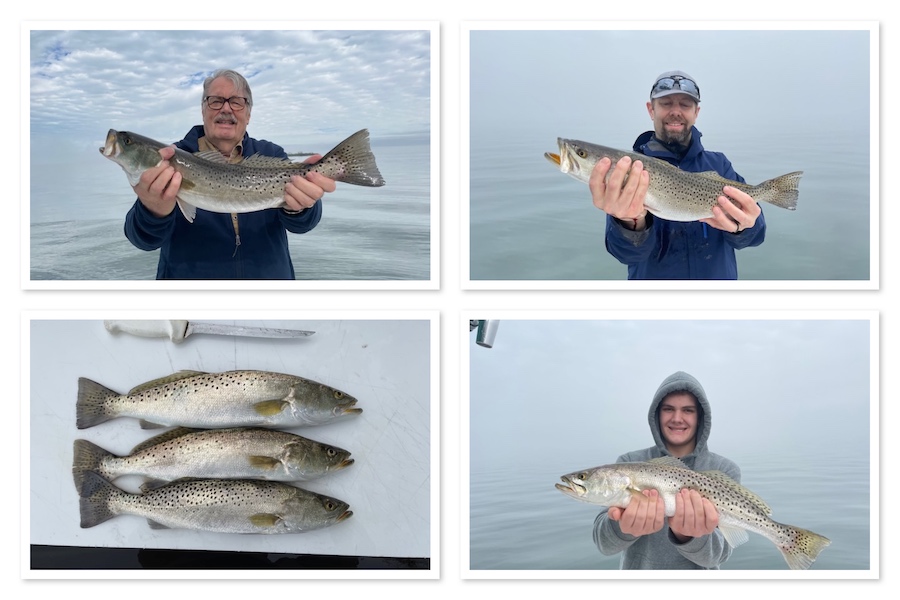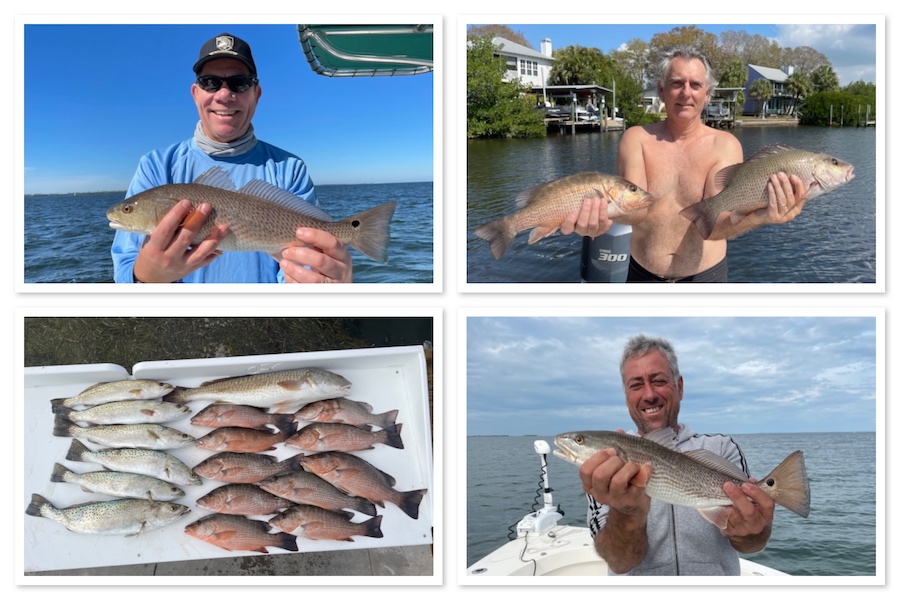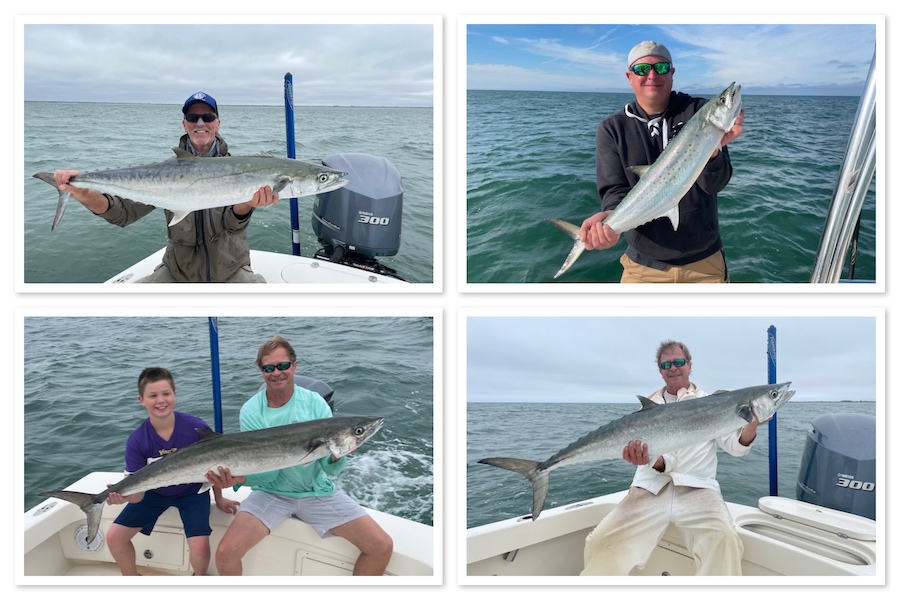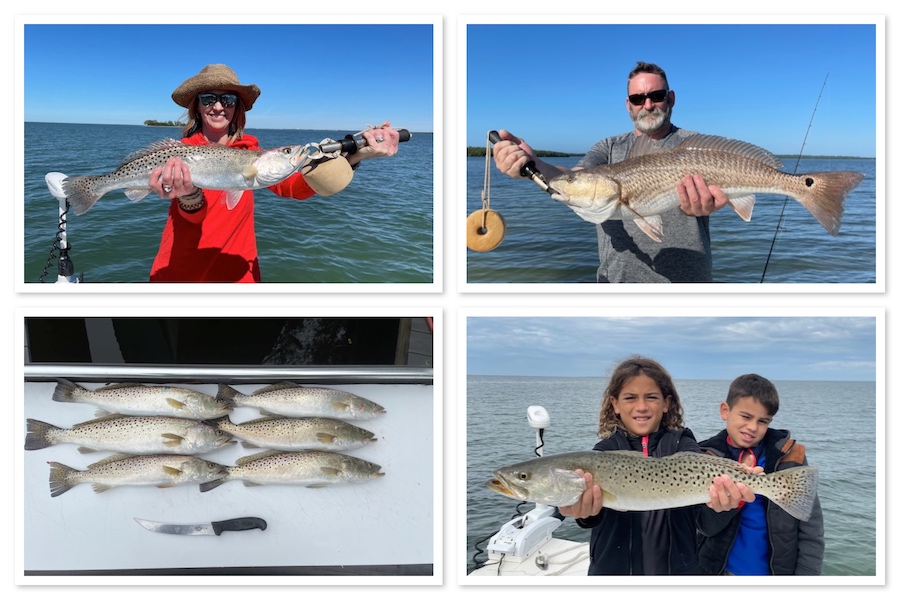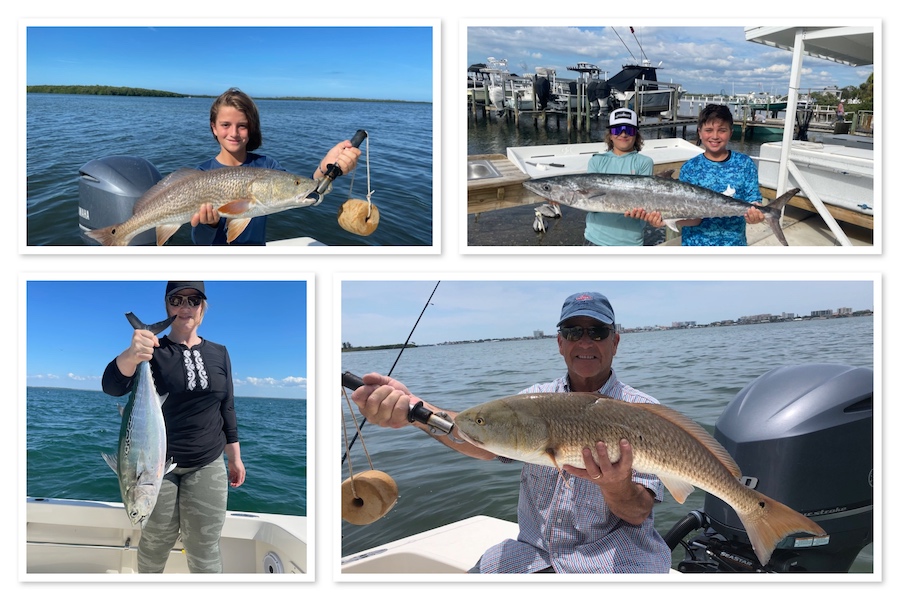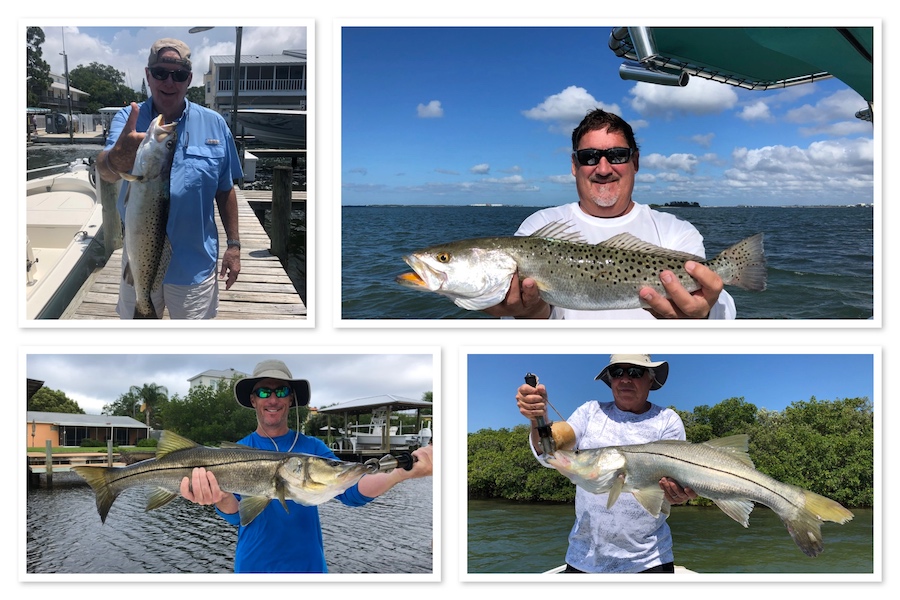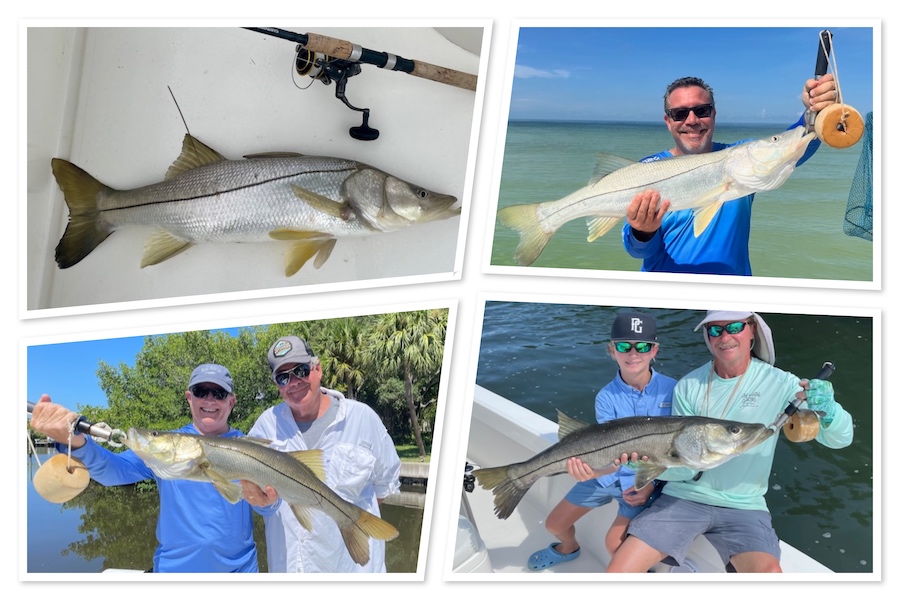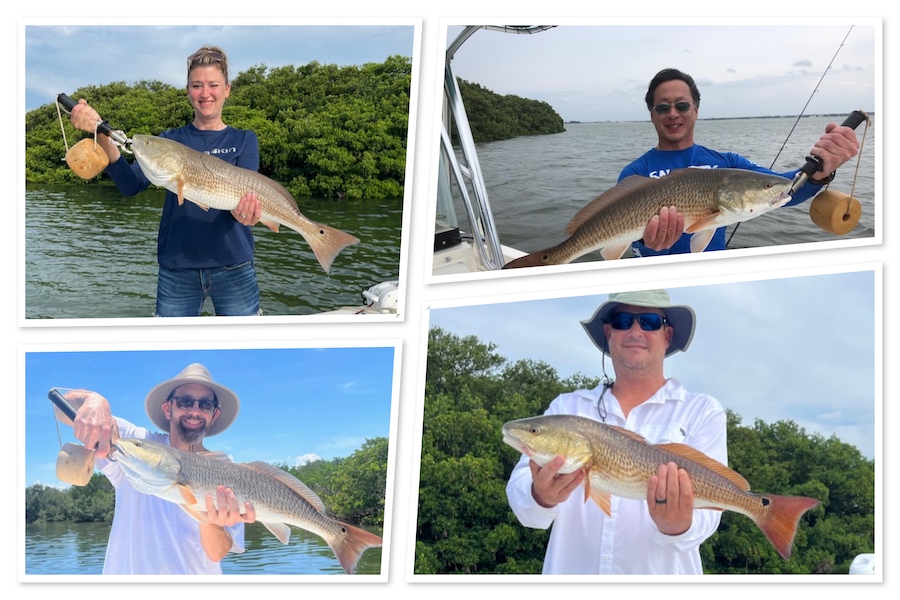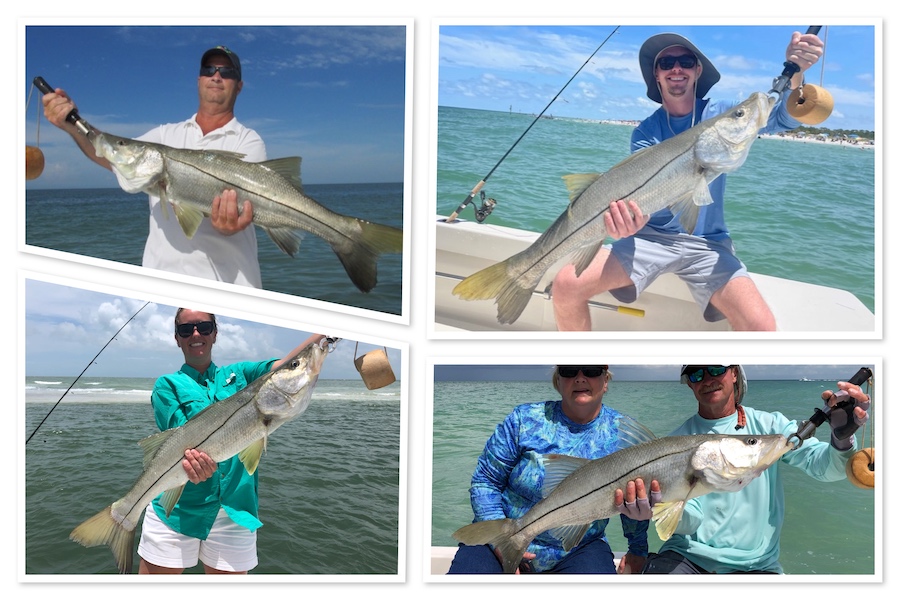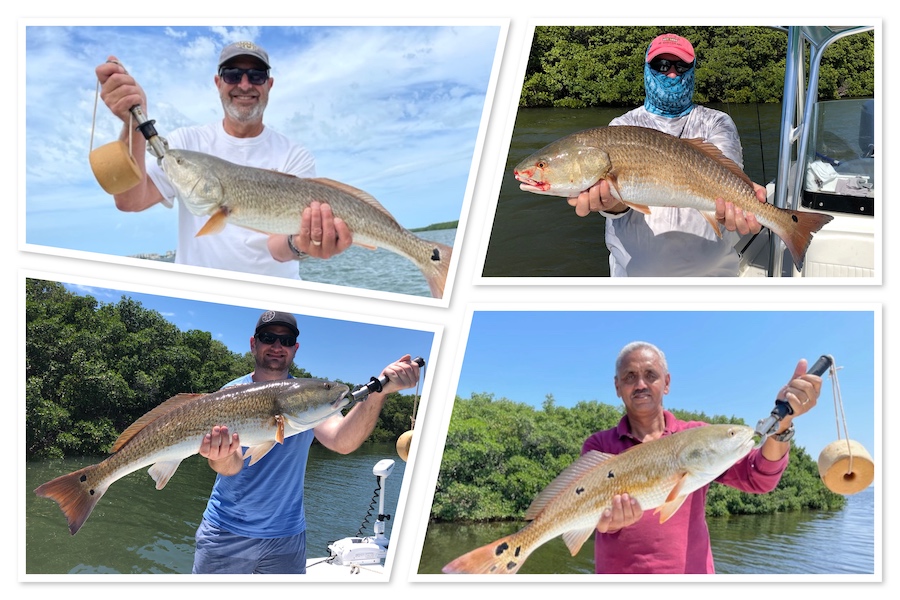Recreational fisherman and guides alike all eagerly anticipate this time of year. March is typically the month when the “tails” of the winter fronts from the north stop reaching West Central Florida, so the big temperature drops associated with these fronts, which are never good for fishing, tend to subside. Also, temperatures, in general, start to moderate, which raises water temperatures, which in turn, improves the bite for various species. It is also the month when the tidal “flip”begins… when daytime tides again become higher than evening tides, opening up more opportunities for redfish.
On that note, redfishing has picked up substantially. A few weeks ago, temperatures in the 80’s range showed up for a few days, which triggered a pretty good bite. Last week however, temperatures dropped back down. With good tides arriving this week, and warmer weather, redfish have again become a primary target. A recent trip yielded well in excess of twenty fish with several 30 inch fish included…crazy good fishing. As always, fish can be found associated with mullet schools and now, with higher tides, in under the bushes along mangrove shorelines. Almost any bait will work for redfish. When fishing the mangrove shorelines, many Tampa / Cleatwater Fishing guides feel that “cast ability” of a bait is as important as what the bait actually is. For target shooting gaps in the mangroves, heavy, rounded baits like cut ladyfish and small the medium mullet are ideal. They are heavy and they skip allowing for accurate presentations deep into the bushes.

Big seatrout, the winter mainstay fishery of everyone in Northern Pines County, are still abundant and coopertaive. Limits are the norm with many trip yielding multiple lists per angler. Quality fish are still eating artificials…swim tail plastics and small minnow imitating plugs…but, as expected, whitebait is far and away the best bait. Present these under a bobber or free-lined for best results. If whitebait are large, be patient and allow the fish to turn and begin to swim off after taking the bait as this allows time for the bait to be turned and the hook to be safely inside the fish’s mouth. Remember…bigger tides…better trout.
The favorite species of the ‘big three” inshore fish, the snook, is just beginning to come to life. Although trout and redfish will eat in cooler water temperatures, the snook will rarely do so. As waters warm, these fish will start to be more visible in the typical backwater locations. On a charter a few days ago, fish were visible however would not rise to chum and would slowly swim off from a perfectly presented large whitebait. Water temperature… 67 degrees. When readings of 70 – 72 degrees appear, these fish will become aggressive enough to eat an occasional bait. When 75 gets here, it’s game on. Moving forward into the summer, there are no temperature concerns as local water temperatures move into the 80’s and stay there. For the next month and a half, many snook will be small to mediums (under 30 inches) although an occasional larger fish will be caught. The bigger fish generally will become more available in later April / early May time frame. Large, live fish baits are always best then. Now, medium to large pilchards are a good choice as many of these fish aren’t large. Come May, big pilchards, threadfins, grass grunts, and ladyfish will all work.
A plan B to consider is that the nearshore snapper should be biting now and come late March, early April, the Spanish mackerel invasion could arrive. Good luck and good fishing.

